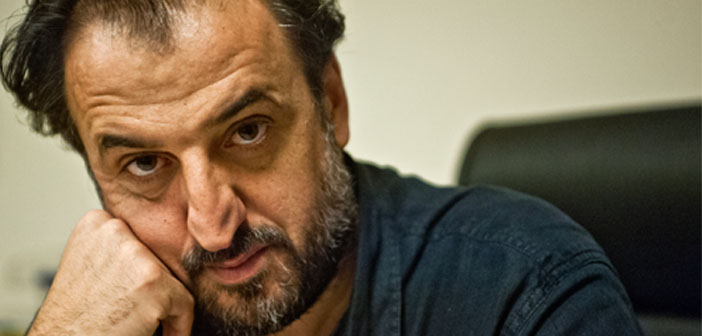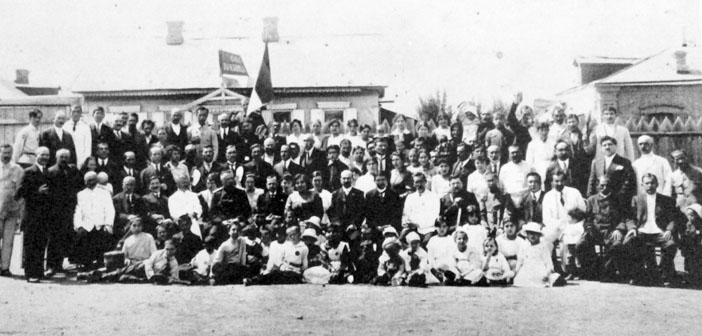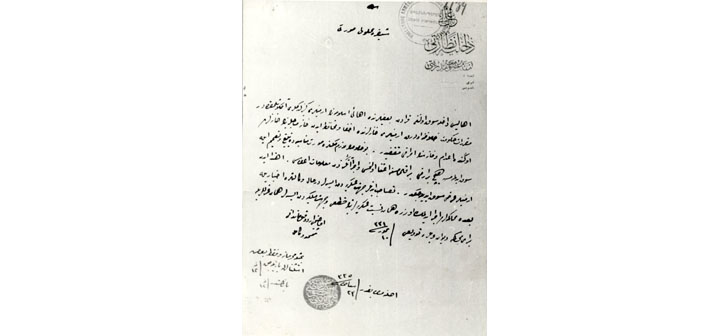We talked to Özcan Alper about his movie “Memories of the Wind” and the issue of representing the disaster.
‘Who are you? You belong nowhere.
You have no home… How long will your existence continue to live like a guest?
Everything is too quiet. Like a well stuffed with stones…
I remember more than what I know… My imagination is larger than my memory. I saw more than the broken remnants of my shattered family.’
These lines are from the inner monologue of Aram, who is the leading character in “Memories of the Wind”; they are the common wail of Armenians, maybe of all people, who bore witness to suffering, subjected to oppression and violence, deported and became homeless. During the dark days of WW II, author and artist Aram has to leave Turkey because of “wealth tax” and political oppression. In a village at the border of Soviet Georgia, in a cabin in the woods, he returns to his childhood and 1915 trauma. He starts to remember the faces that he buried deep in his memory; while he is drawing them, his wail reaches to audience through his inner monologues.
Let’s start with the story of the movie. Can you tell about the process of writing the screenplay that is inspired by the life of Aram Pehlivanyan?
It was the time when we just finished “Future Lasts Forever” movie. Sometimes, a poem, book or situation triggers you. Literature is not only a need for me; it has always been a part of my life. One day, I was thumbing through some books and I came across Aram Pehlivanyan’s book of poems. I am interested in the intellectual generation of ‘40s and in the works and lives of people like Abidin Dino, Yaşar Kemal, Sabahattin Ali and Rıfat Ilgaz. We know that there weren’t much talking and writing on minorities in the socialist movement and in the literature of those times. I found out that Aram Pehlivanyan couldn’t have written poems after his exile and this shook me up. I began to think about the situation of a good poet who cannot write poems after becoming more active in socialist movement. I looked at the lives of Vartan and Jak İhmalyan, poems written by Nazım Hikmet during those times and the novels of Sabahattin Ali. I realized that the intellectuals were suffering a spiritual exile in the totalitarian and authoritarian system of those times, especially under the war conditions. There is the so-called “black generation” who saw both the first and second world wars. Aram, who is inspired by many intellectuals of those times as well as Pehlivanyan, publishes a periodical in Armenian and Turkish in 1943. So, I thought that he must have been 35-40 years old in 1943. Going back in time, the trauma and past of a child, who was about 10 years old in 1915, began to come to light. I focused on Armenian authors, artists, communist and socialists of those times. And the foundations of the movie were decided: exile, homelessness, being on the edge, searching for a home, facing death, deportation, genocide, and struggle for reconciling with death.
In the movie, Aram suppresses his memories of 1915 and he introduces himself as Ahmet to Mikail, whom he stays with in the village. Do you think that this might be the imposition of the socialist environment that he is in?
When Aram Pehlivanyan died in 1979, his communist friends were referring him as Ahmet Saydam; this fact draws attention to a defect in these lands. We know the attitude of Turkish socialist movement, Soviet Union and all the countries in the world toward the Armenian Genocide. Everybody cares for its own political interests, because the genocide has a major economic aspect. The money that was gained through genocide was sent to Germany by the masterminds of the genocide and then, England seized that money. The west cared for its economic interests and wanted to conceal the disaster; this is also what they are doing now concerning the refugee crisis. Soviet Union wanted to have good relations with Turkey; so, even in Soviet Armenia, they didn’t allow people to talk about the genocide. Turkish socialist movement was silent about 1915, since it based itself on Soviet Union and couldn’t have developed a unique understanding. Vedat Türkali made a self-criticism about this issue in his novel “Güven”. And in an interview made by Hrant Dink, he stated that Turkish socialist movement hasn’t reconciled with the genocide.
What does the silence of Aram say about the Armenians who lapsed into silence after witnessing the genocide?
There might be two reasons for this silence. After a disaster, the survivors cannot look back, since they try to mend their shattered lives and struggle with difficulties. On this point, Marc Nichanian’s book “Writing the Disaster” became a reference book for me. He writes about the expressing the disaster in literature and art, witnessing and the ways of witnessing through the Armenian Genocide. And Primo Levi’s “The Drowned and the Saved”… Levi is a holocaust survivor and he wrote for witnessing the disaster for his entire life. However, at the age of 67, he committed suicide, since he couldn’t take the pressure of witnessing and his memories anymore. Levi says that not the survivors, but the people who died during the holocaust are the real witnesses. We know about Walter Benjamin’s suicide and the lives of Stefan Zweig and his wife who didn’t want to keep witnessing the cruelty of Nazis and chose to die in the woods of Latin America.
Armenians don’t speak, because they fear that new generation might be damaged. Also, is it even possible to talk about such terrible events? There is a story in one of the oral history books of Hrant Dink Foundation. At the end of ‘60s, a woman wants his father to tell his story and to record it. His father cannot talk for a long time. The silence is actually the wail itself. Aram suppresses his past to some point. When he is faced with the same violence and exile, the past begins to come to light slowly. Past can never be forgotten, it always turns up like a bad penny. Today, there is a Kurdish question, because Turkey cannot talk about 1915.
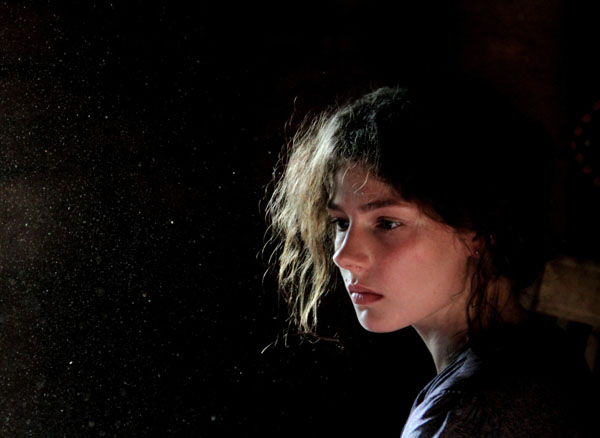
While Aram is alone in the woods, he begins to remember the faces that he saw in the deserts of Der Zor. What kind of researches did you made on memory and remembering?
I read studies and writings on Armenian Genocide, coups in Sarajevo, Indonesia, Latin America and on social traumas, disasters, genocides and the way the collective memory is formed in those situations. I focused on the mental state of Aram. At the same time, it can be said that I made an anthropological excavation. While thinking about the ways of remembering and the aesthetic aspect of this issue, I decided that this character can return to past through the stream of consciousness. And I thought about how I could adapt this literary technique used by authors like Adalet Ağaoğlu and Virginia Woolf to a movie. On this point, Nichanian’s book led the way once again. If talking about the disaster is impossible, a different reality should be created. I imagined that some faces are engraved in Aram’s memory. After starting to reconcile with his trauma, Aram begins to remember the faces of children and old women. He remembers the face of his father and sister, who died during the holocaust. The crucial point is this: The only face he cannot remember is the face of his mother. Surviving doesn’t mean happiness or joy of living for Aram; it means holding on to an undesired life. He suffers from the survivor’s guilt. In addition to the social trauma, there is also the personal trauma of Aram. I tried to establish a relation between individual and collective memory.
How do Aram’s memories about his mother affect his relationship with women?
As a child surviving a disaster, the image of his mother never leaves him. In the process of writing on Aram’s past, I thought that Aram has problems with women, until he reconciles with his mother.
We see Aram’s father on a train leaving Konya. How does his father influence Aram’s life?
We see Aram’s father only on train and the moment he is shot in the mist. There is a scene that I cut from the movie later. His father was saying one thing which determines Aram’s life: “Don’t hold a grudge, but never forget and draw.” Then I cut it from the movie thinking that it might sound didactic. Though the father doesn’t say anything in the movie, he influences Aram’s struggle to continue his life. He says, “My father was a broken voice.”
It has been said that the movies and works on the genocide decreased in number on the 100th anniversary of the genocide. What do you think?
I think we have to go beyond this kind of debates. In the end, the genocide also led to a cultural genocide. In Jerusalem, there is one of the largest Armenian libraries in the world. I visited that library and someone gave us a tour of the library. He took us to a room; there were thousands of books. He said: “These are the books that were saved from Anatolia before 1915. Now, there are Armenians all around the world, but after 100 years, the cultural production is not even as much as the one-tenth of that of past. For me, this is the real genocide.” According to Marc Nichanian, trying to prove the genocide amounts to being on the same page with the denialists. Instead of creating movies or books on genocide, we have to create works that bring past into present as a cultural entity. My movie takes place on ‘40s and we see 1915 through memories. I created it with the feelings that are left from the past and it also tells about the present.
In the movie, Aram’s inner monologue stands out and there is not much dialogue. What is the reason for his?
I think that for movies, unlike literature, minimum dialogue is more meaningful. Cinematographic and visual language is more important. Aram is a person who expresses himself through his actions. The silence itself is his language. Because of his trauma, his pushes his past into his subconscious. At some point, he wants to write them down by keeping a diary. We tried two things. I worked with Ahmet Büke, one of the best young storytellers in Turkey. He kept a diary, as if he is on exile in the middle of nowhere. Then, I added some parts of that diary to the script. We decided to use inner dialogues in order to reflect Aram’s inner world. Then, we wanted to work with someone who uses a more symbolic language. I find Bülent Usta’s article very poetic. He read almost 50 books on this issue. We tried to find ways to reflect the process without using much talking. We had to refine it. Bülent worked really hard. Every time I watch the movie, Aram’s inner monologues give me goose bumps.
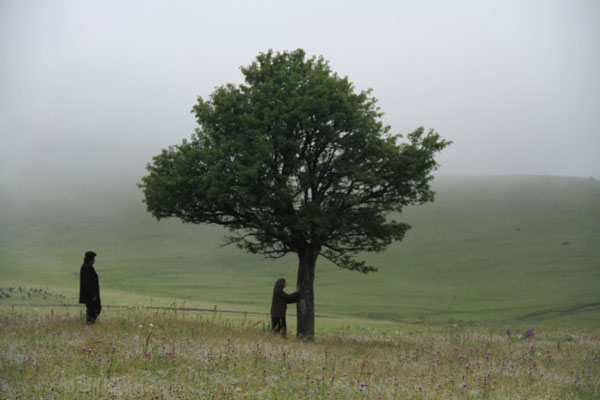
Every character in the movie says “Nothing” at some point. Does this “nothing” correspond to our silence in social life?
In the process of writing, I realized that all the characters want to say a lot of things to each other, but they remain silent for various reasons. “Nothing” is like the materialized version of the social traumas and reconciliation issues. In our personal lives, we conceal the issues that we can easily solve by talking through. I think, if we can realize that, we can make a clean break both on social and personal level.
In Turkey, only 20.000 people watched Fatih Akın’s “The Cut”. Both Turks and Armenians had reservations about a movie that tells about a historical tragedy. What do you think about that?
Fatih Akın has an audience, but before the movie come to the screen, a lynching campaign was launched and in part, it succeeded. I think the releasers were afraid to rent the movie. It is important that a Turkish director shot a movie on 1915. Armenians’ lack of interest might be explained by their mental state. On the other hand, there is a spirit in Turkey that affects everybody. I think that the Armenians in Turkey are also affected by the culture codes in Turkey. There is a majority who conceals their identity and stays away from politics. However, there is a new generation who wants to change this.
You say that the researches you made for the movie were also a learning process for you. In this process, what was the most surprising thing for you?
Nichanian gives an example from “Iliad”. There is a dialogue between Hector and Achilles. Hector says that whoever dies, his body must be respected and handed to his relatives for a proper funeral ceremony. This story shows that the respect for mourning is the key to living together, and mourning is directly related to peace. Leaving aside all the books I’ve read on this issue, this story summarizes the attitude of the state and people, and the denial of genocide in Turkey. Hacı Lokman Birlik’s body was dragged by a car in Hakkari and the body of Aziz Güler, who died fighting in Rojava, hadn’t been handed to his family for days; this shows how the state and the system maintain the same violence and cruelty since 1915, despite their Islamists, Muslim identities. Armenians have this trauma; they destroy your people, they show no respect to the losses and they even try to prevent you from mourning.
Do you think that political movies can be understood independently of prejudices and denials?
After 100 years, leaving aside accepting the genocide, if you cannot see that mourning is natural, then there is a major problem. Literature and art are also not free from this spirit. From the process of making the movie to the reaction of some festivals in Turkey, I feel that there is censorship, though it is only hinted. However, the most dangerous thing is self-censor. I made this movie because I feel a responsibility for myself.
Özcan Alper’s leading character is inspired by Aram Pehlivanyan. He was born in 1917 in Üsküdar. After Nersesyan-Yermonyan and Getronagan, he studied law in İstanbul University. He began to write poems while he was a high school student. In the university, he participated in political activities. He was arrested in 1945 and spent 15 months in prison. The ‘Nor Or’ (new day) magazine that he had been publishing with Aliksanyan and Sarkis Keçyan was closed in 1946 under the martial law and he spent 3 more years in prison. In 1950, he published ‘Grung’ (crane) magazine, but he went to Erzurum for the military service before he could have published the second issue. He worked in the politburo of Turkish Communist Party. He died in Berlin in 1917. The book consisting of his poems in Armenian and Turkish was published by Aras Publishing in 1999.


